Categories > Guides and Tips

Ultimate 10-Day Travel Guide to Thailand
- Time Zone
- Best Time to Go
- Things to Know
- How to Get Around
- Where to Stay
- Where to Eat
- What to Do in Thailand
- Day 1 - Explore the bustling city of Bangkok
- Day 2 - Wander around Ayutthaya
- Day 3 - Enjoy cultural experience in Sukhothai
- Days 4 & 5 - Visit historical temples in Chiang Mai
- Day 4
- Day 5
- Day 6 - Explore the mountains in Chiang Rai
- Day 7 & 8 - Enjoy the beaches in Phuket
- Day 7
- Day 8
- Day 9 & 10 - Discover islands in Koh Phi Phi
- Day 9
- Day 10
- Where to Shop in Thailand
- Chatuchak Weekend Market in Bangkok
- CentralWorld in Bangkok
- ICONSIAM in Bangkok
- Central Phuket Festival
- Chiang Mai Night Bazaar
- What to Expect from Thailand Weather
Are you ready to embark on the ultimate 10-day journey to Thailand?
Whether you’re a first-time traveller or a seasoned globetrotter, this 10-day travel guide is designed to help you make the most of your time in this extraordinary country.
We’ll uncover hidden gems, share insider tips, and embrace the laid-back vibe that defines the essence of Thailand. Let’s go!
Time Zone
Indochina Time (GMT+7)
Best Time to Go
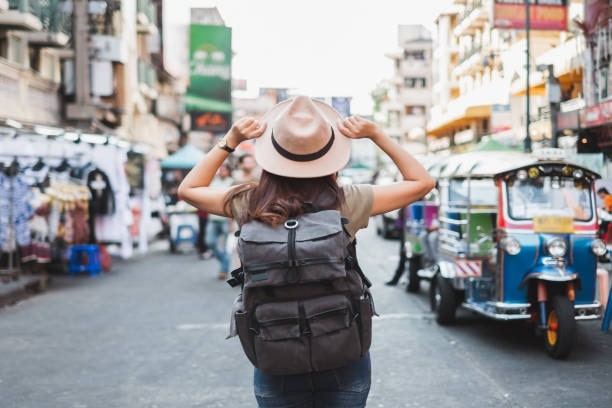
The best time to visit Thailand is during the dry season, which typically extends from November to February. This time of the year is widely regarded as the peak tourist season—and for good reason!
The weather during these months is generally more comfortable and favourable for travellers, making it an excellent time to explore the country’s diverse landscapes and attractions.
Additionally, the dry season offers clear blue skies and lower humidity levels, providing fantastic opportunities for beach enthusiasts to indulge in sunbathing, swimming, and water activities.
Furthermore, the dry season aligns with several key festivals and celebrations, adding an extra layer of cultural richness to your experience.
Notable festivals during this period include Loy Krathong, where thousands of candlelit floats are released onto rivers and lakes, and Christmas and New Year celebrations that are infused with a unique Thai touch.
Things to Know

Language: Thai
Currency: Thai Baht (THB)
Visa Requirements: Depending on your nationality, you may be eligible for a visa exemption, allowing you to stay in Thailand for up to 30 days without a visa.
However, if you plan to stay longer or have different travel purposes, it’s essential to check the latest visa requirements and apply accordingly.
Respect for Culture and Religion: Thai culture places great importance on respect. One of the most essential things to remember is when visiting temples or sacred sites, remember to dress modestly and remove your shoes before entering.
Tuk-Tuks and Transportation: Tuk-tuks are a popular and fun way to get around in cities, but be sure to negotiate the fare before hopping in.
For longer distances, consider using metered taxis or app-based ride-hailing services for a more reliable fare.
Street Food Delights: Thailand is renowned for its delicious street food. Embrace the local culinary scene, but exercise caution by choosing stalls with high turnover to ensure freshness and cleanliness.
Bargaining at Markets: Bargaining is a common practice at markets in Thailand. Have fun haggling for souvenirs, but remember to do so with a friendly smile and a good-natured attitude.
Health Precautions: Stay hydrated and use mosquito repellent and sunscreen to protect yourself from the sun . Additionally, drink bottled water and be mindful of the ice in your drinks to avoid any health issues.
How to Get Around
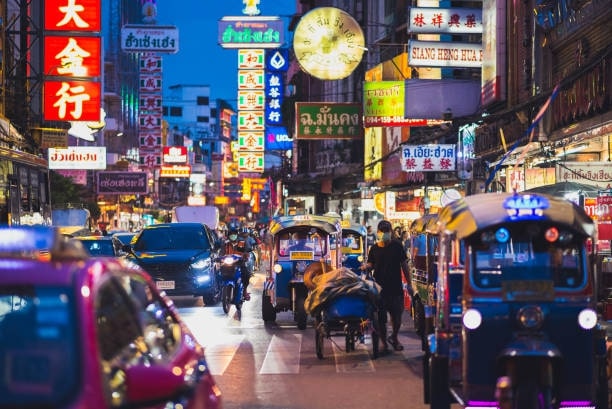
Domestic Flights: For covering long distances quickly, domestic flights are an excellent option. Thailand has numerous airports serving major cities and tourist destinations.
Airlines like Thai Airways, AirAsia, Bangkok Airways, and Nok Air offer regular domestic flights at affordable prices.
Trains: Thailand’s railway system connects several cities and regions. Trains are a comfortable and scenic way to travel, especially when journeying between Bangkok and northern destinations like Chiang Mai and Ayutthaya.
Overnight sleeper trains are a popular choice for long-distance travel.
Buses: Buses are a cost-effective means of transportation, connecting major cities and towns across Thailand. There are both government-operated and private bus services, offering various classes, including VIP and air-conditioned buses.
They are often the preferred mode for travelling to destinations without a nearby airport or train station.
Taxis and Tuk-Tuks: Taxis and tuk-tuks are readily available in cities and tourist areas. In Bangkok, metered taxis are common, while tuk-tuks are popular for short trips within city centres.
Negotiate the fare before boarding a tuk-tuk to avoid any misunderstandings.
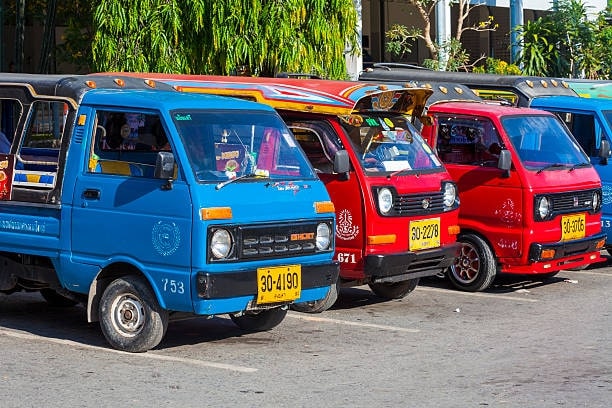
Motorbikes and Scooters: Renting a motorbike or scooter is a popular option for exploring islands and rural areas.
However, ensure you have a valid international driver’s licence and exercise caution, as traffic conditions can be chaotic in some places.
Songthaews: Songthaews are shared minivans or pickup trucks with benches, serving as a form of public transportation in smaller towns and rural areas. They follow set routes and can be flagged down along the roadside.
Ferries and Boats: Ferries and boats are essential for island-hopping in Thailand.
Whether you’re exploring the Andaman Sea islands like Phuket, Phi Phi, and Krabi or the Gulf of Thailand islands like Koh Samui and Koh Phangan, ferries and speedboats connect these scenic destinations.
Walking and Cycling: In many cities and towns, walking and cycling are excellent ways to explore. Many areas have pedestrian-friendly streets and dedicated cycling lanes, allowing you to discover local attractions at a leisurely pace.
Where to Stay
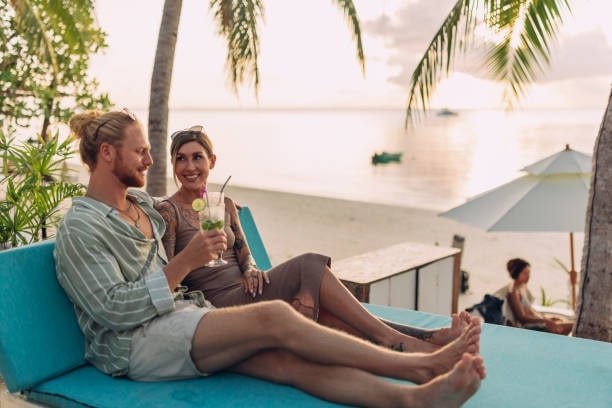
Thailand offers a plethora of accommodation options to suit every traveller’s budget and preferences.
Whether you’re seeking luxury resorts, cosy boutique hotels, budget-friendly hostels, or unique homestays, you’ll find an array of choices in various locations across the country.
Here are some popular areas to consider for your stay:
Bangkok: As the bustling capital city, Bangkok boasts a wide range of accommodation options, from opulent hotels along the Chao Phraya River to trendy hostels in vibrant neighbourhoods like Sukhumvit and Khao San Road.
Chiang Mai: This charming city in northern Thailand offers a blend of traditional guesthouses and boutique hotels, providing a more serene and cultural ambiance.
Phuket: The island of Phuket is known for its beautiful beachfront resorts and luxury villas, particularly in popular areas like Patong, Kata, and Karon Beach.
Koh Samui: Another tropical paradise, Koh Samui, features an array of beachside resorts and boutique hotels, perfect for those seeking a tranquil beach getaway.
Krabi: With stunning limestone cliffs and pristine beaches, Krabi offers various accommodation options ranging from budget-friendly guesthouses to high-end resorts.
Koh Phi Phi: This small archipelago is famous for its picturesque beaches, and you can find everything from lively hostels to upscale resorts.
Remember to book your accommodations in advance, especially during peak seasons, to secure your preferred choice and get the best rates.
Where to Eat
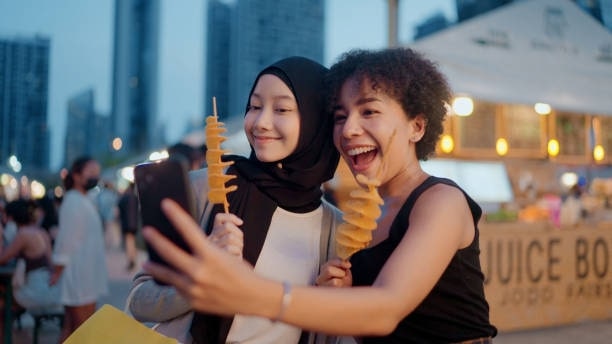
Thailand’s culinary scene is a gastronomic adventure, offering an array of delectable dishes to tantalise your taste buds.
From street food stalls to upscale restaurants, you’ll find an abundance of dining options throughout the country.
Here are some must-try dishes and places to eat:
Street Food: Embrace the vibrant street food culture in Thailand. Wander through night markets and bustling streets to savour favourites like pad thai, som tum (spicy green papaya salad), mango sticky rice, and grilled satay.
Local Restaurants: Look for small local eateries or “hole-in-the-wall” places to try authentic Thai dishes. These establishments often serve dishes prepared with traditional recipes and fresh ingredients.
Floating Markets: If you’re near Bangkok or other areas with floating markets, immerse yourself in the unique experience of enjoying freshly cooked Thai dishes while floating along the water.
Seafood Restaurants: Coastal areas like Phuket, Krabi, and Koh Samui offer a fantastic selection of seafood restaurants, where you can indulge in succulent seafood dishes overlooking the ocean.
Rooftop Restaurants and Bars: In major cities like Bangkok and Chiang Mai, seek out rooftop restaurants or bars for a memorable dining experience with stunning views of the city skyline.
Vegetarian and Vegan Restaurants: Thailand is also a haven for vegetarians and vegans , with numerous restaurants dedicated to plant-based dishes, particularly in cities like Chiang Mai.
What to Do in Thailand
Day 1 – Explore the bustling city of Bangkok
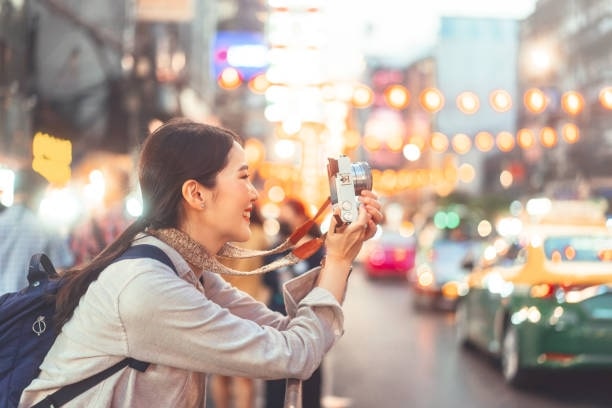
Start your journey in the vibrant capital city of Bangkok, where modernity meets tradition in a seamless blend.
Here are some must-do activities for your first day:
Visit the Grand Palace: Marvel at the opulence and architectural brilliance of the Grand Palace, the former residence of Thai kings. Don’t miss the stunning Emerald Buddha Temple (Wat Phra Kaew) within the palace complex.
Explore Wat Pho: Next to the Grand Palace, discover Wat Pho, famous for its giant Reclining Buddha statue and the traditional Thai massage school.
Take a Boat Ride on the Chao Phraya River: Hop on a boat and cruise along the Chao Phraya River, passing by iconic landmarks and observing the daily life of locals along the riverbanks.
Experience Khao San Road: As the backpacker hub, Khao San Road offers a lively atmosphere, street food, and vibrant nightlife. It’s a great place to mingle with other travellers and enjoy the local entertainment.
Day 2 – Wander around Ayutthaya

On day two, venture out of Bangkok and head to Ayutthaya, the ancient capital of Siam.
Here’s what you can do:
Visit Ayutthaya Historical Park: Explore the ruins of ancient temples and palaces in this UNESCO World Heritage Site. Rent a bicycle or join a guided tour to cover the vast area comfortably.
Wat Mahathat: Witness the iconic Buddha head entwined in tree roots at Wat Mahathat, one of the most photographed sites in Ayutthaya.
Take a River Cruise: Enjoy a leisurely boat ride along the Chao Phraya River, offering a unique perspective of Ayutthaya’s historical sites from the water.
Day 3 – Enjoy cultural experience in Sukhothai

Continue your journey to Sukhothai, another ancient capital of Thailand, renowned for its historical significance and cultural heritage:
Sukhothai Historical Park: Explore the Sukhothai Historical Park, a UNESCO World Heritage Site featuring well-preserved temples and stunning Buddha statues. Rent a bicycle or electric scooter to navigate the vast park comfortably.
Ramkhamhaeng National Museum: Learn more about the history of the Sukhothai Kingdom and its artefacts at the Ramkhamhaeng National Museum.
Loy Krathong Festival (if timing allows): If you’re lucky enough to be in Sukhothai during the Loy Krathong festival (usually in November), join the locals in floating candles and lotus-shaped offerings on waterways to celebrate the full moon.
Days 4 & 5 – Visit historical temples in Chiang Mai
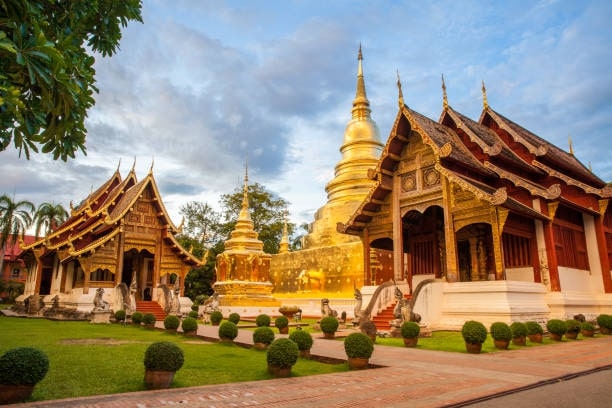
Chiang Mai, the cultural heart of northern Thailand, is a city steeped in history and surrounded by lush greenery. Over the next two days, immerse yourself in the ancient temples and unique experiences that this charming city has to offer:
Day 4
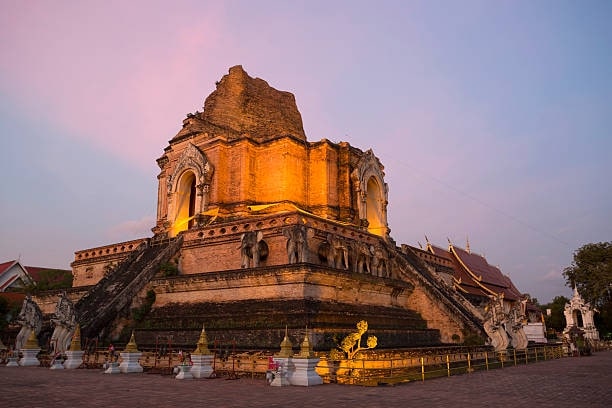
Wat Phra Singh: Begin your day by visiting Wat Phra Singh, one of the most revered temples in Chiang Mai, known for its exquisite Lanna architecture and the sacred Buddha image housed inside the Viharn Lai Kham.
Wat Chedi Luang: Explore the impressive ruins of Wat Chedi Luang, once the tallest structure in ancient Chiang Mai. Admire the massive chedi and learn about its fascinating history.
Wat Phan Tao: Visit the serene Wat Phan Tao, known for its beautifully crafted teakwood viharn, which provides a tranquil escape from the bustling city.
Wat Suan Dok: End your day by visiting Wat Suan Dok, where you can witness the stunning sight of hundreds of white Chedis and enjoy the peaceful ambiance.
Day 5
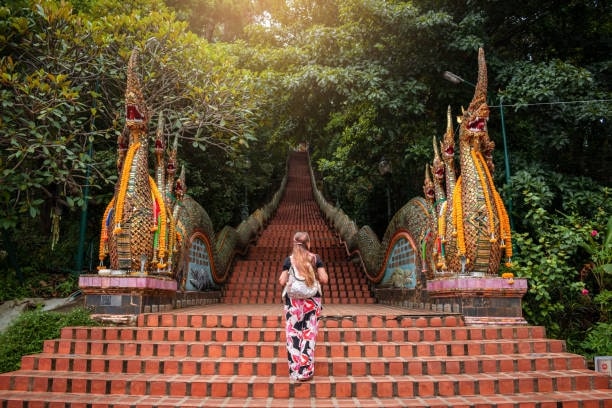
Doi Suthep Temple: Venture up the mountain to visit Doi Suthep Temple, one of Chiang Mai’s most iconic landmarks. Enjoy breathtaking views of the city from the temple’s terrace and admire the intricate golden pagoda.
Explore Old City: Spend the afternoon strolling through Chiang Mai’s Old City, which is enclosed by ancient walls and moats. Discover quaint cafes, art galleries, and traditional shops selling local handicrafts.
Night Bazaar: As evening approaches, head to the famous Chiang Mai Night Bazaar, where you can shop for souvenirs, enjoy delicious street food, and experience the vibrant atmosphere.
Day 6 – Explore the mountains in Chiang Rai
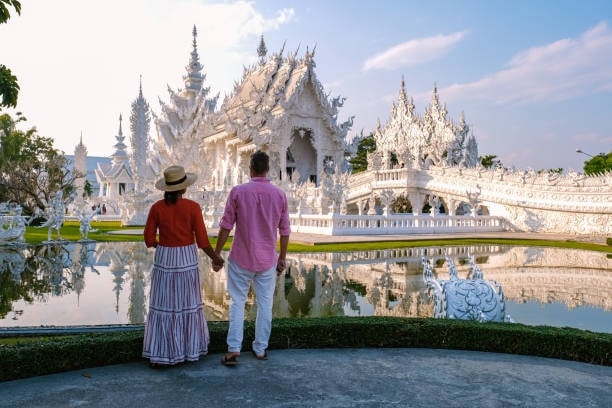
On day six, venture northeast to Chiang Rai, a city known for its stunning landscapes and unique art attractions:
White Temple (Wat Rong Khun): Start your day by visiting the extraordinary White Temple, a contemporary and unconventional masterpiece that stands out with its pure white exterior and intricate, reflective glass work.
Blue Temple (Wat Rong Suea Ten): Next, head to the Blue Temple, a lesser-known gem adorned with shades of blue and gold. Its ornate artwork and serene atmosphere make it a memorable stop.
Golden Triangle: Embark on a journey to the Golden Triangle, where the borders of Thailand, Laos, and Myanmar meet. Enjoy the scenic views and learn about the region’s opium history at the Hall of Opium museum.
Long Neck Karen Village: If you’re interested in indigenous cultures, you can also visit a Long Neck Karen Village and interact with the fascinating Padaung tribe known for their traditional neck rings.
Day 7 & 8 – Enjoy the beaches in Phuket
After exploring the cultural wonders of northern Thailand, it’s time to head south to Phuket, Thailand’s largest island and a renowned beach destination. Spend the next two days soaking up the sun and relishing the coastal beauty:
Day 7
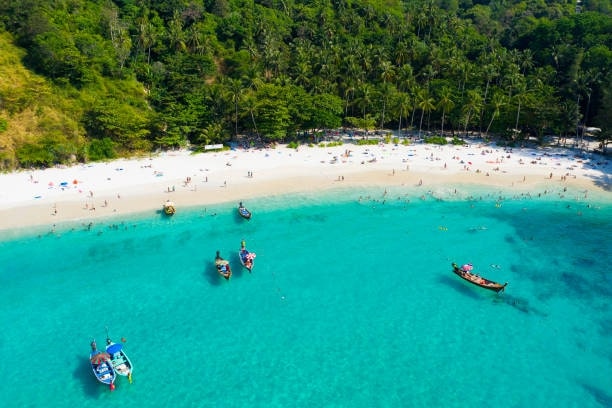
Patong Beach: Start your beach adventure by visiting Patong Beach, one of Phuket’s liveliest and most popular beaches. Enjoy various water activities, relax on the sandy shores, and explore the bustling streets filled with restaurants, bars, and shops.
Big Buddha: After a beach morning, visit the Big Buddha, a colossal marble statue sitting atop Nakkerd Hill. The panoramic views from here are breathtaking, offering a stunning outlook over Phuket and its surrounding waters.
Wat Chalong: Head to Wat Chalong, one of Phuket’s most significant temples, to learn about Thai Buddhism and appreciate the intricate architecture and religious artefacts.
Day 8
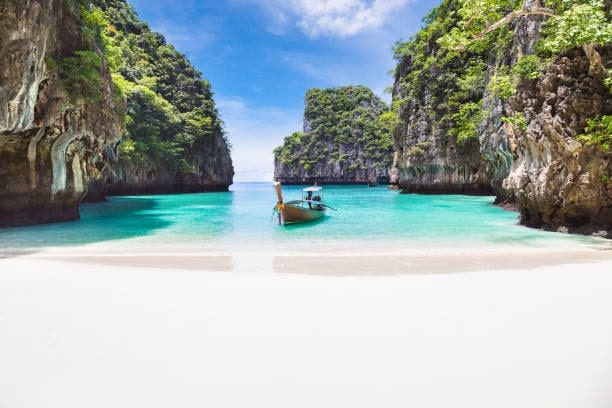
Phi Phi Islands Day Trip: Embark on a full-day excursion to the famous Phi Phi Islands. Cruise through the Andaman Sea, visit Maya Bay (where the movie “The Beach” was filmed), and snorkel in the crystal-clear waters.
Don’t miss Viking Cave and Monkey Beach for unique experiences.
Phi Phi Viewpoint: Hike to the Phi Phi Viewpoint for an awe-inspiring panorama of the islands and turquoise waters below.
Day 9 & 10 – Discover islands in Koh Phi Phi
For the final leg of your journey, travel to the enchanting Koh Phi Phi Islands, known for their stunning natural beauty and vibrant nightlife:
Day 9
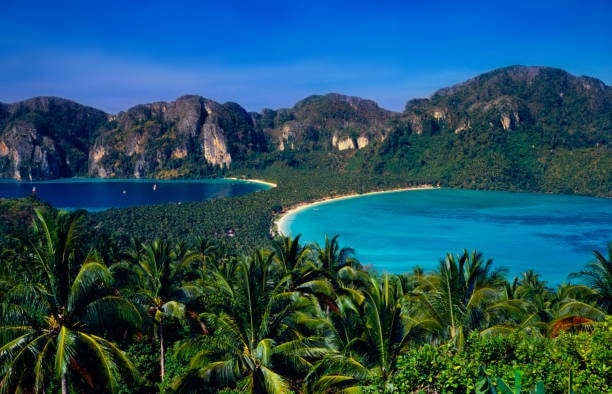
Phi Phi Leh: Explore the uninhabited Phi Phi Leh, the smaller of the two main islands, famous for its limestone cliffs and emerald lagoon, Pileh Bay.
Snorkeling and Diving: Discover the vibrant marine life by snorkelling or diving in the crystal-clear waters. Phi Phi Islands offer excellent opportunities to observe colourful coral reefs and diverse sea creatures.
Loh Dalum Bay: Relax at Loh Dalum Bay, a picturesque beach offering a laid-back ambiance during the day.
Nightlife: Experience the lively nightlife of Koh Phi Phi in Tonsai Village, with beach parties, fire shows, and beachfront bars.
Day 10
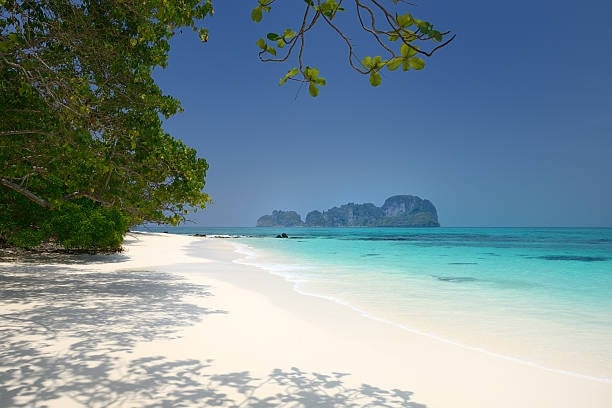
Bamboo Island: Take a boat trip to Bamboo Island, another beautiful spot for snorkelling and sunbathing in a more secluded setting.
Long Beach: Visit Long Beach, a quieter alternative to Tonsai Bay, where you can enjoy peace and serenity.
Where to Shop in Thailand
Chatuchak Weekend Market in Bangkok
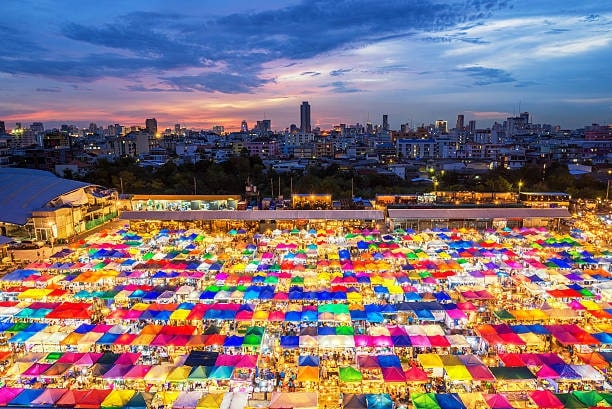
Chatuchak Weekend Market, also known as JJ Market, is one of the largest and most famous markets in the world.
With over 8,000 stalls spread across 27 sections, this vibrant market is a treasure trove of goods, including clothing, accessories, home decor, handicrafts, and much more.
It’s an excellent place to experience the local culture, taste delicious street food, and find unique and affordable items. The market opens on weekends (Saturday and Sunday) and is a must-visit for any shopaholic.
CentralWorld in Bangkok

CentralWorld is one of Bangkok’s premier shopping complexes, located in the heart of the city. This expansive mall offers an array of high-end fashion brands, electronics, home goods, and entertainment options.
From designer boutiques to international department stores, CentralWorld is a haven for fashion enthusiasts and those seeking a modern shopping experience.
Don’t miss the stunning Christmas decorations during the festive season, making it a popular spot for holiday shopping.
ICONSIAM in Bangkok

ICONSIAM is a luxurious riverside shopping complex, known for its upscale boutiques, international brands, and exclusive dining options.
This high-end mall is a showcase of Thailand’s grandeur, with opulent architecture and a stunning view of the Chao Phraya River. Apart from shopping,
ICONSIAM also features art installations, live performances, and cultural exhibitions, offering a unique shopping and entertainment experience.
Central Phuket Festival
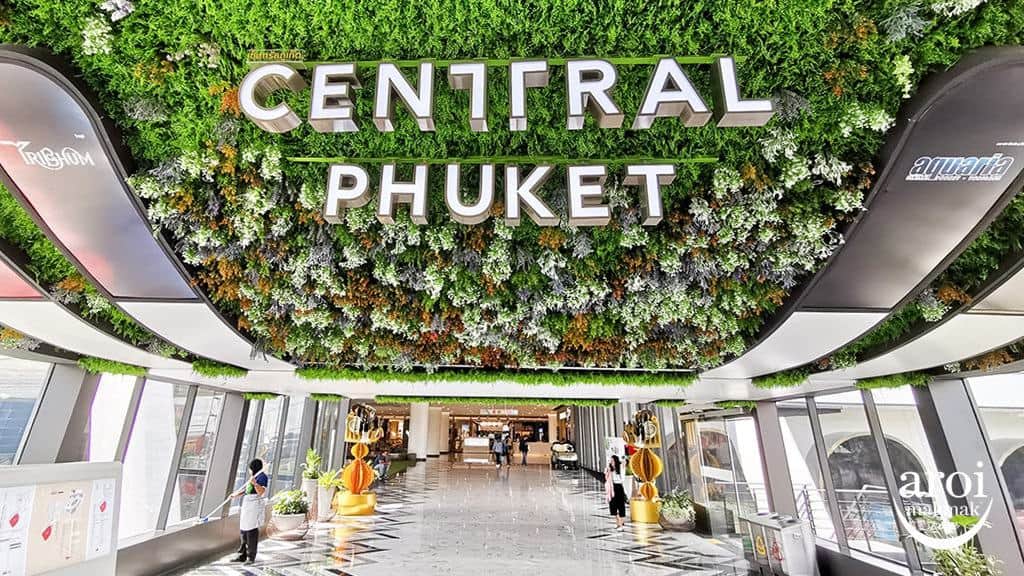
Central Phuket Festival is a sprawling shopping mall in Phuket, offering a mix of international and local brands, restaurants, entertainment zones, and even an ice-skating rink.
With a wide selection of products and services, including fashion, electronics, and souvenirs, this mall caters to both tourists and locals alike.
The open-air section, named Tribhum, features a themed attraction inspired by Thai mythology, making it an exciting destination for families.
Chiang Mai Night Bazaar
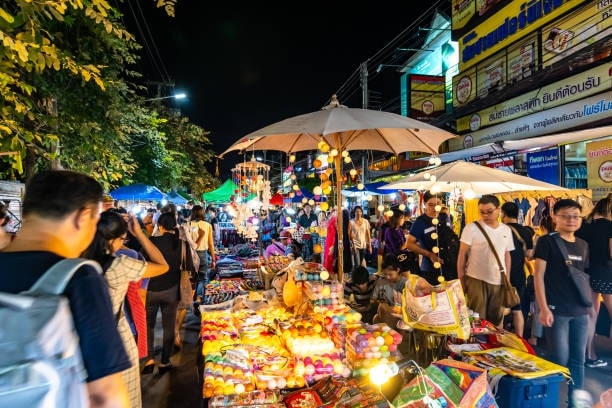
The Chiang Mai Night Bazaar is an iconic and bustling market that comes alive in the evenings. As the sun sets, the streets are lined with vendors selling a myriad of items, such as handicrafts, textiles, jewellery, artwork, and local snacks.
This vibrant market is an excellent place to practise your bargaining skills and find unique gifts to bring back home. It’s a quintessential Chiang Mai experience, and the lively atmosphere is not to be missed.
What to Expect from Thailand Weather
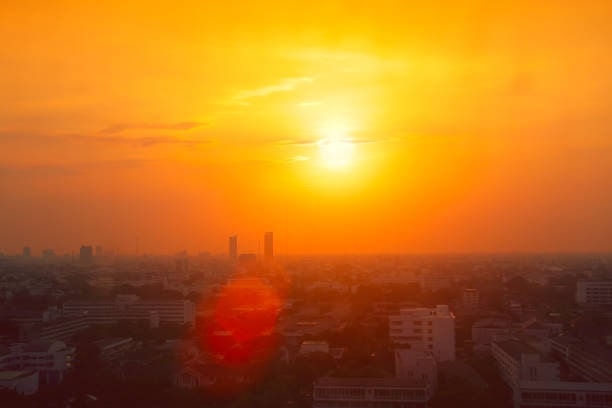
Dry Season (November to March): This is the most popular and pleasant time to visit Thailand. Expect cooler temperatures, especially in the northern regions and higher elevations.
The weather is generally dry with minimal rainfall, making it ideal for sightseeing and outdoor activities. Daytime temperatures range from 25°C to 30°C (77°F to 86°F), while nights can be cooler, especially in December and January.
Hot Season (March to June): The hot season brings higher temperatures and increasing humidity to most parts of Thailand. Daytime temperatures can soar above 35°C (95°F) in some areas, particularly in central and northern regions.
Coastal areas may experience sea breezes, offering some relief from the heat.
This season is ideal for beach lovers and water activities, but it can be quite intense for inland exploration.
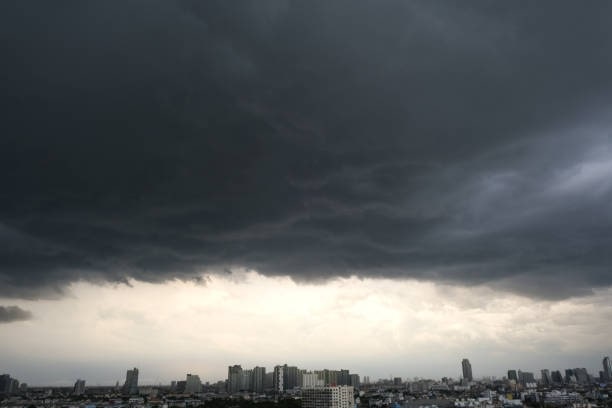
Monsoon Season (July to October): The monsoon season varies by region, with the southwest monsoon affecting the Andaman Sea coast (e.g. Phuket, Krabi) from May to October.
On the other hand, the southeast monsoon affects the Gulf of Thailand coast (e.g., Koh Samui, Koh Phangan) from October to December. Expect frequent rain showers and thunderstorms during this period, particularly in the afternoons and evenings.
The monsoon season also brings lush greenery to the landscapes and can create dramatic scenery, but it may limit certain outdoor activities Some regions, like Koh Samui, have a drier period during the monsoon season, so it’s still possible to visit these areas during this time.
Shoulder Seasons (April to June and September to October): The shoulder seasons occur between the dry and monsoon seasons and offer a transition in weather patterns.
While the temperatures may still be warm, the number of tourists is generally lower, and accommodation prices may be more affordable.
Rainfall can be more sporadic during these periods, but it’s essential to check the specific weather conditions for your intended destination.





